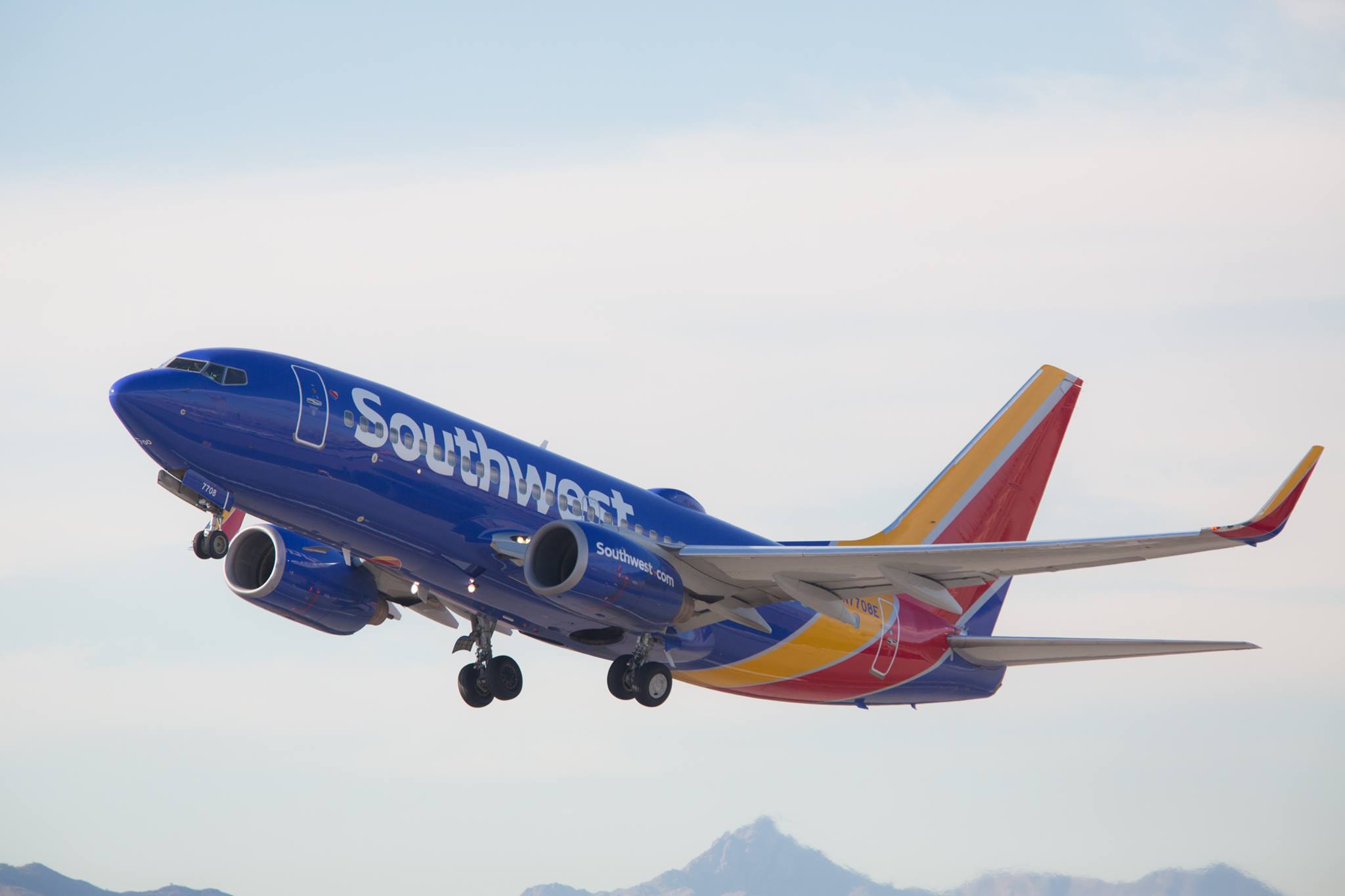On Thursday, Southwest Airlines (LUV 1.61%) reported another record quarterly profit as the discount carrier capitalizes on solid demand in the U.S. and cheap oil. The company also confirmed that it is seeing sharp improvement in its unit revenue trajectory.
Southwest's combination of growth and margin expansion is increasingly setting it apart from the legacy carriers it competes with. Let's take a closer look at how the low-fare leader is distancing itself from the pack.
Southwest's quarter by the numbers
Southwest's third-quarter revenue, excluding a $172 million special revenue adjustment related to its new credit card agreement with JPMorgan Chase, rose 7.2% year over year to $5.15 billion. This exceeded the average analyst estimate of $5.11 billion. Southwest's revenue growth was driven by a robust 7.6% increase in capacity during the quarter.

Southwest Airlines' revenue is taking off.
Revenue per available seat mile (RASM) -- again excluding the special revenue adjustment -- fell just 0.4% last quarter. That was better than Southwest's earlier projection that RASM would decline by about 1.0%. It was also a huge improvement from the 4.7% decrease recorded in Q2. About 2.5 percentage points of the sequential improvement was driven by the new credit card deal, but the rest was attributable to strengthening demand.
In addition to generating strong revenue growth, Southwest Airlines managed its costs well during Q3. Excluding fuel costs, profit-sharing, and special items, unit costs declined 1.6% year over year.
This caused adjusted operating income to surge 61% year over year, reaching $1.05 billion. Thanks to Southwest's ongoing share repurchase program, EPS rose even more, climbing 71% to $0.94. That was $0.02 ahead of the average analyst estimate.
Southwest continued to return most of its earnings to shareholders. For the first nine months of 2015, the company posted adjusted net income of $1.8 billion and free cash flow of $1.6 billion. It used this cash to pay out $180 million in dividends and buy back about $1.2 billion in stock.
Near the top of the industry, despite big hedging losses
Southwest Airlines' Q3 adjusted operating margin of 20.3% will likely put it near the top of the industry in terms of profitability. Among the top four airlines, only Delta Air Lines (DAL 2.17%) is likely to surpass it. Earlier this month, Delta reported a record Q3 adjusted operating margin of 21%.

Delta's adjusted operating margin for Q3 came in slightly ahead of Southwest's.
Southwest's strong relative performance is particularly notable because it suffered big fuel hedging losses last quarter. The company's economic fuel expense of $2.20/gallon included $0.50/gallon in hedging losses.
By contrast, Delta Air Lines paid much closer to market prices for fuel. Delta's average fuel price during Q3 was just $1.80/gallon. Had Southwest Airlines been unhedged last quarter, it would have earned a much higher operating margin than Delta.
Looking ahead
Southwest expects its momentum to accelerate in Q4. Unit revenue is expected to increase about 1% year over year, bolstered again by the improved terms of Southwest's co-branded credit card agreement.
Non-fuel unit costs, excluding profitsharing and special items, will be roughly flat despite the impact of a new pilot contract that is currently undergoing a ratification vote. Economic fuel expense per gallon is expected to decline by at least 20% relative to Q4 2014. As a result, Southwest is positioned for another quarter of strong earnings growth.
The only real knock against Southwest Airlines right now is its aggressive fuel hedging program, which has proven costly this year. Southwest has fuel hedges going out as far as 2018, and its net hedging liability currently stands at $1.2 billion. It is currently 35% hedged for 2016, 65% hedged for 2017, and 25% hedged for 2018.
That said, Southwest can easily absorb hedging losses on this scale. After all, it has produced operating income of more than $3.6 billion in the last 12 months, with profitability still rising. Furthermore, Southwest's long-term hedging strategy could still pay off. 2017 is still far in the future, and it's entirely possible that oil prices will have rebounded significantly by then.







